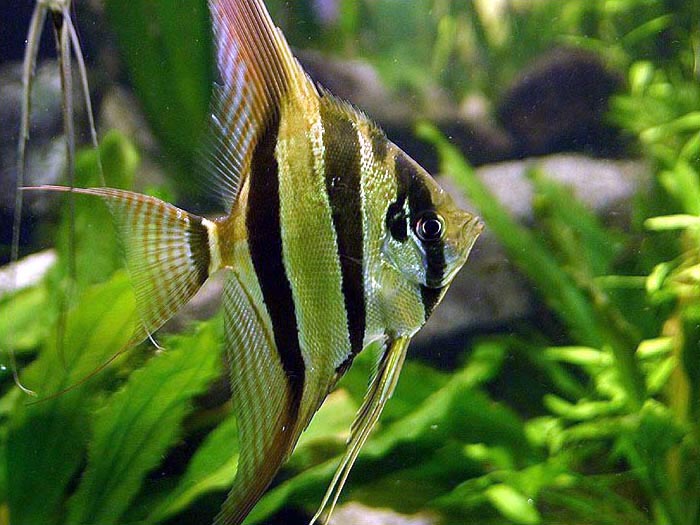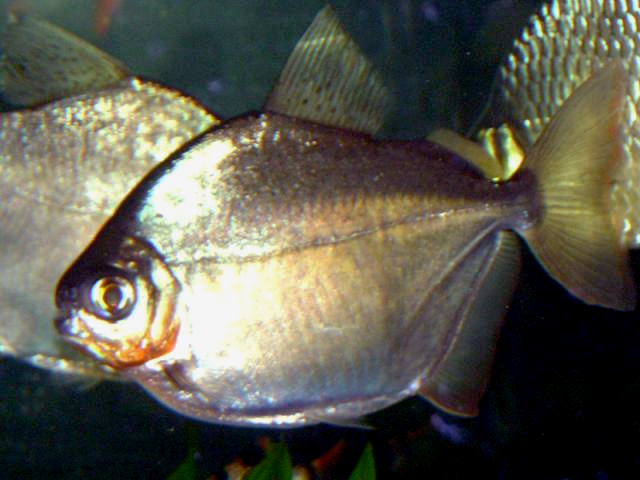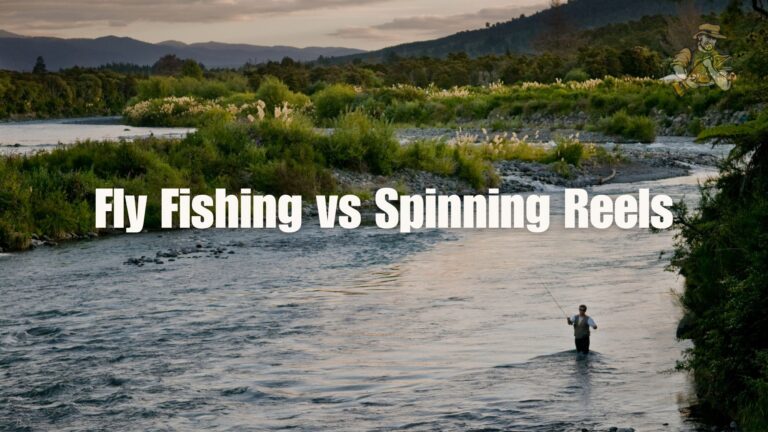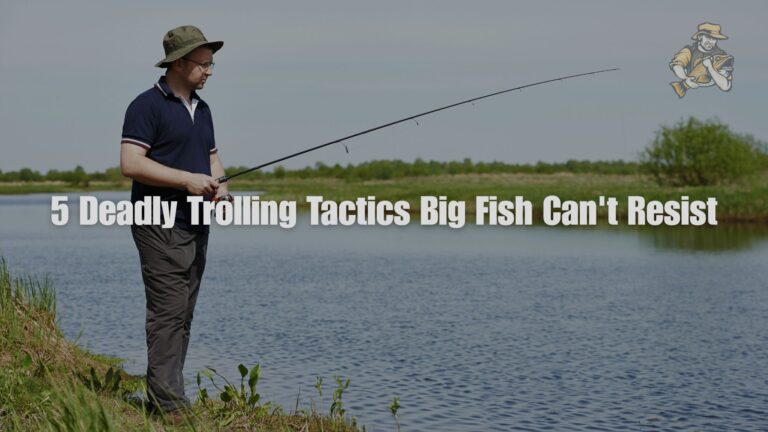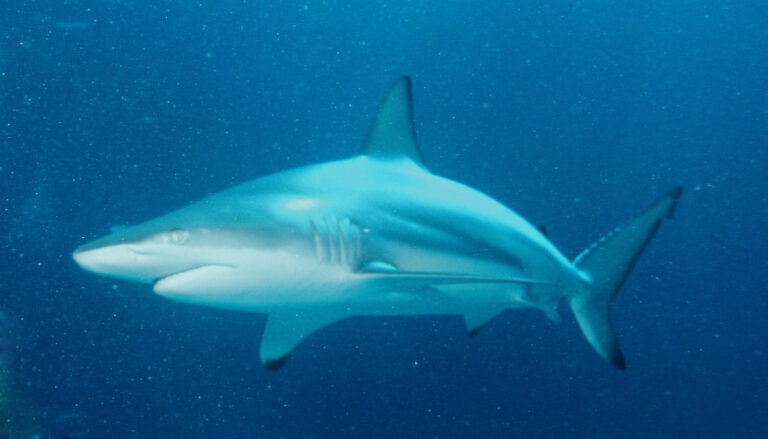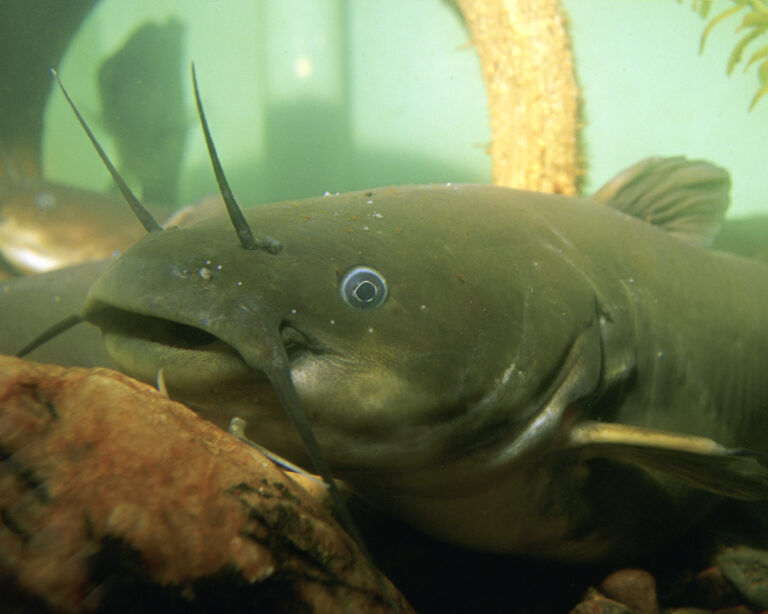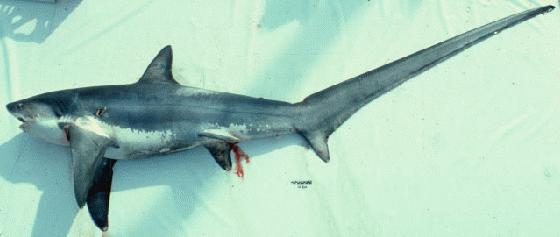7 Types of Fisheries You Should Know Before Casting Your Line
By Adam Hawthorne | Last Modified: May 3, 2025

I’ve been fishing for over 30 years across all kinds of waters, and one thing I’ve noticed is how many anglers – especially beginners – don’t realize the incredible variety of fisheries that exist. Understanding different types of fisheries isn’t just interesting knowledge; it directly impacts your fishing success and helps you become a more versatile angler.
Types of Fisheries Every Angler Should Understand
Fisheries aren’t just places where fish live – they’re complex ecosystems with unique characteristics that influence everything from the species present to the techniques that work best. Let me break this down for you based on what I’ve learned after decades on the water.
Over the years, I’ve fished in nearly every type of fishery you can imagine, from tiny farm ponds to the open ocean. Each one requires a different approach, different gear, and a different mindset.
1. Freshwater Lake Fisheries
Lakes hold a special place in my heart. Some of my earliest fishing memories were formed on the shores of Lake Michigan with my grandfather, learning to cast with a simple spinning rod while trying to catch whatever might bite.
Freshwater lakes can range from small farm ponds to massive bodies of water like the Great Lakes. What makes lake fisheries unique is their relatively stable conditions compared to rivers or oceans. Lakes typically have:
- Standing water rather than flowing
- Various depth zones (littoral, limnetic, profundal)
- Seasonal thermoclines that fish follow
- Distinct structure like points, humps, and drop-offs
The fish species you’ll find depend heavily on the lake’s size, depth, and location. In Michigan where I fish most often, our lakes hold everything from bass and panfish to pike, muskie, and various trout species.
The fishing approach for lakes varies dramatically based on size. On smaller lakes, I can often cover most productive areas in a day. But on Lake Michigan? I’m still discovering new spots after decades of exploration.
Lake fisheries also change dramatically with the seasons. During spring on the Great Lakes, you’ll find me targeting spawning smallmouth bass in shallow rocky areas. By midsummer, I’m often trolling deeper waters for lake trout along underwater structures. And come fall, I might be casting for feeding pike near weed edges.
According to the Michigan Department of Natural Resources, our state alone has more than 11,000 inland lakes, providing incredible fishing diversity. Each one has its own character and fishing patterns.
One interesting thing I’ve noticed is how lake fisheries often develop micro-patterns. A technique that works on one end of a lake might completely fail on the other end, sometimes just a mile away. This is why local knowledge is so valuable.
2. River and Stream Fisheries
Rivers hold fish differently than lakes – something that took me years to truly understand. My first time on the Au Sable River in Michigan was a humbling experience. I approached it like a lake and went home skunked.
River fisheries are characterized by:
- Moving water that creates current patterns
- Constantly changing conditions based on rainfall and seasons
- Predictable holding areas where fish rest out of the current
- Migration patterns as many species move upstream to spawn
Fish in rivers are positioned based primarily on current. They’ll often hold behind structures like rocks, logs, or in deeper pools where they can rest while waiting for food to flow by. This creates predictable feeding zones that smart anglers can target.
The species mix in rivers tends to favor those adapted to current – in North America that often means various trout species, smallmouth bass, catfish, and in some regions, steelhead and salmon during their runs.
River fishing techniques typically center around:
- Reading water to identify likely holding areas
- Presenting bait or lures naturally with the current
- Working upstream to avoid spooking fish
- Understanding seasonal migration patterns
I remember a morning on the Pere Marquette River when I was targeting steelhead. I spent hours making perfect drifts through what looked like prime holding water without a single bite. Then I ran into a local angler who pointed out that I was fishing “yesterday’s water” – the fish had moved upstream after overnight rain. That lesson stuck with me.
The American Rivers conservation organization works to protect these vital flowing waterways that not only provide recreation but serve as crucial habitat. In my experience, river fisheries tend to be more fragile than lakes and more dramatically affected by environmental changes.
Rivers also create some of the most diverse fishing opportunities. On the Columbia River trip I took with college friends years ago, we caught sturgeon that might have been swimming those waters since before I was born. Something about connecting with fish that ancient gives river fishing a special quality.
3. Coastal and Estuary Fisheries
The first time I fished an estuary on the Gulf Coast, I was completely confused. It wasn’t quite ocean fishing, wasn’t quite freshwater, and followed patterns I didn’t understand at all.
Coastal and estuary fisheries exist where freshwater meets saltwater, creating some of the most productive ecosystems on earth. They’re characterized by:
- Tidal influences that create constantly changing conditions
- Brackish water with varying salinity levels
- Nutrient-rich environments that support diverse food chains
- Serving as nurseries for many marine species
When fishing coastal areas and estuaries, you need to understand tidal movements. Fish feeding patterns often correspond directly to tidal stages – something I learned through many frustrating trips before finally paying attention to tide charts.
Popular species found in these transitional zones include redfish, speckled trout, flounder, snook, and various baitfish that attract larger predators. The diversity can be amazing, with the possibility of catching freshwater and saltwater species in the same spot.
These areas demand specialized gear that can handle the corrosive effects of saltwater while being appropriate for the target species. I learned this lesson the hard way when my freshwater gear got trashed after just a few trips to coastal waters. Now I keep separate setups specifically for these environments.
The timing of your fishing in coastal areas becomes critically important. During one trip to the Outer Banks, I struggled until a local explained the concept of “fishing the falling tide” when predators position to ambush baitfish being pulled out of marshes.
The Coastal Conservation Association does important work protecting these unique transitional environments, which face threats from development, pollution, and changing ocean conditions.
It took me several trips and a lot of research to finally start consistently catching fish in estuary environments, but now they’re among my favorite places to fish. The diversity of species and the constantly changing conditions create a challenging but rewarding experience.
4. Offshore and Deep Sea Fisheries
I’ll be honest – deep sea fishing intimidated me for years. The sheer scale of the ocean, the specialized boats and gear, and the powerful fish made it seem like a different world compared to the freshwater fishing I grew up with.
Offshore fisheries exist beyond coastal waters and extend into the open ocean. They feature:
- Deep water with various temperature breaks and currents
- Pelagic species that often travel in schools following food sources
- Distinct structures like underwater mountains, reefs, and drop-offs
- Need for larger vessels and specialized heavy-duty equipment
My first true offshore fishing experience was during that trip to Baja California I mentioned earlier. We traveled miles from shore to find waters over 1,000 feet deep, hunting for yellowfin tuna and dorado. The scale was unlike anything I’d experienced in freshwater.
Offshore fishing techniques typically involve:
- Trolling artificial lures or bait at specific speeds
- Drift fishing over productive structure
- Chumming to attract fish from deeper water
- Using electronics to locate schools of baitfish or temperature breaks
The vessels used for offshore fishing are specifically designed for open water conditions, with features for safety and fish-finding that you won’t see on smaller inland boats. They’re also considerably more expensive to operate, which is why many anglers charter rather than own.
The International Game Fish Association maintains records for offshore species and promotes conservation of these ocean resources. Their research has helped establish sustainable practices for targeting these often-migratory species.
During that Baja trip, I hooked into what the captain later estimated was a 200+ pound marlin – by far the largest fish I’ve ever had on a line. After a 20-minute fight that left my arms burning, the line snapped. I was simultaneously devastated and relieved! That fish would have been too big to legally keep anyway, but the experience gave me enormous respect for blue water anglers who target these giants regularly.
5. Reef and Structure Fisheries
Reef fishing represents a specialized type of saltwater fishing, focused on the incredible biodiversity supported by coral and rocky structures. Though I’ve had limited personal experience with reef fishing compared to freshwater, my trips to Florida taught me just how different this approach is.
Reef fisheries are defined by:
- Complex underwater structures that attract and hold fish
- Typically clear water conditions
- Extremely diverse species concentration in relatively small areas
- Sensitive ecological balance requiring conservation awareness
Reefs create natural concentration points for marine life, with smaller fish seeking protection among the structure while predators patrol the perimeter. This creates a fascinating ecosystem where dozens of species might inhabit a single small reef.
Fishing techniques for reef environments usually involve:
- Vertical jigging directly over structure
- Drift fishing with natural baits
- Sight casting to visible fish in clear water
- Careful navigation to avoid damaging the reef itself
During a memorable trip to the Florida Keys, I watched in amazement as the captain positioned us near a relatively small patch reef, where we proceeded to catch seven different species in under an hour. The concentration of life was astonishing compared to the more dispersed patterns I was used to in northern lakes.
According to the National Oceanic and Atmospheric Administration, coral reefs support approximately 25% of all marine species despite covering less than 1% of the ocean floor. That biodiversity makes them incredibly productive fishing grounds.
One thing that surprised me while reef fishing was how structure-oriented the fish were. Move just 50 yards away from the reef, and you might as well be fishing in a desert. This precision positioning is crucial for success and quite different from the more forgiving nature of lake fishing.
I’ve also done some fishing around artificial reefs – man-made structures placed specifically to create fish habitat. These can be incredibly productive and demonstrate how important structure is to creating healthy fisheries.
6. Commercial Fisheries
Commercial fisheries operate on a completely different scale than recreational fishing, and understanding them gives context to many of the regulations we face as sport anglers.
I’m not a commercial fisherman, but I’ve had the chance to talk with many over the years, especially around the Great Lakes where commercial operations still harvest whitefish, perch, and other species.
Commercial fisheries are characterized by:
- Focus on harvest for market rather than recreation
- Use of specialized equipment designed for efficiency
- Management through strict quotas and licensing
- Economic importance to coastal communities
Unlike recreational fishing, commercial operations are a business, with success measured in pounds and dollars rather than personal enjoyment. This fundamental difference drives everything from gear selection to fishing locations.
Common commercial fishing methods include:
- Trawling with large nets pulled behind vessels
- Longlines with hundreds or thousands of hooks
- Purse seines that encircle schools of fish
- Gill nets that entangle fish of specific sizes
- Trap systems for species like lobster and crab
According to the Food and Agriculture Organization, commercial fisheries harvest over 90 million tons of fish annually from marine waters worldwide. That massive scale sometimes puts commercial and recreational interests at odds regarding resource management.
During a fishing trip to Maine several years ago, I spent a day with a lobsterman, pulling and resetting traps. The methodical approach and intimate knowledge of very specific locations gave me new appreciation for the skill involved in commercial fishing. It’s not just about volume – successful commercial operators understand marine ecosystems at a level most recreational anglers never achieve.
Many recreational anglers don’t realize how closely commercial and recreational fisheries are linked in management decisions. Harvest limits, season dates, and protected areas are often established considering both sectors’ needs and impacts.
7. Aquaculture Fisheries
The first time I visited a fish farm in northern Michigan, I was surprised by the complexity of the operation. This wasn’t just throwing feed in a pond – it was precision agriculture applied to raising fish.
Aquaculture represents the farming of aquatic organisms rather than capturing wild populations. It’s a rapidly growing sector that includes:
- Fish farms in ponds, tanks, or ocean pens
- Shellfish cultivation in suitable coastal areas
- Controlled environments for raising specific species
- Integration with traditional agriculture in some cases
Modern aquaculture facilities use advanced technology to maintain optimal growing conditions, monitor fish health, and maximize production while minimizing environmental impact. The best operations achieve impressive efficiency in converting feed to protein.
Common aquaculture species include:
- Tilapia, catfish, and trout in freshwater systems
- Salmon and steelhead in both freshwater and marine environments
- Oysters, mussels, and clams in coastal operations
- Shrimp in tropical regions
According to the Aquaculture Stewardship Council, farm-raised seafood now accounts for over half of all seafood consumed globally, highlighting its growing importance in food systems.
While most anglers focus on wild fisheries, understanding aquaculture provides context for seafood markets and some stocked fishing opportunities. Many public fishing areas are stocked with farm-raised fish, creating fishing opportunities that wouldn’t otherwise exist.
My local lake in Michigan receives a spring stocking of rainbow trout from a nearby hatchery. Without this aquaculture-supported program, we’d have no trout fishing opportunity in this particular water body. The fish aren’t wild, but they provide recreation and eventually naturalize to their new environment.
I’ve found that some fishing purists look down on farm-raised fish, but the reality is that well-managed aquaculture takes pressure off wild populations while providing consistent protein sources. It’s not a replacement for wild fisheries, but it’s an important complement in a world with growing demand for seafood.
How Understanding Fisheries Improves Your Fishing
Knowing the type of fishery you’re fishing dramatically improves your chances of success. I can’t count how many times I’ve seen anglers using lake tactics in a river, or freshwater approaches in saltwater, then wondering why they’re not catching fish.
Each fishery type requires:
- Specific gear adaptations
- Understanding of how fish behave in that environment
- Knowledge of seasonal patterns unique to that fishery
- Conservation practices appropriate to the ecosystem
When I plan a fishing trip to an unfamiliar area, the first thing I research is what type of fishery I’ll be targeting. This fundamentals-first approach has saved me countless hours of frustration over the years.
One memorable example: years ago, I took Finn (my black lab) and headed to Lake Erie for walleye fishing, bringing all my standard lake tactics. After two fishless days, I finally talked to a local who explained that Lake Erie walleye behave much more like river fish in the western basin due to the current from the Detroit River. Once I switched to drift fishing techniques more suited to moving water, I started catching fish immediately.
FAQ About Types of Fisheries
Which type of fishery is best for beginners?
For most beginners, I recommend starting with freshwater lake fisheries, particularly smaller lakes and ponds. They tend to have more forgiving conditions, accessible shorelines, and often higher concentrations of easier-to-catch species like panfish. Rivers can be challenging to read for newcomers, and saltwater introduces additional complexities like tides and specialized gear requirements.
How do fishing regulations differ between fishery types?
Regulations are typically tailored to the specific challenges and fish populations of each fishery type. For example, marine fisheries often have size limits to ensure fish reach spawning age, while some river systems have special regulations during spawning runs. The U.S. Fish and Wildlife Service provides information on federal regulations, but always check local rules as they can vary significantly between different fisheries.
Can the same fishing techniques work across different fishery types?
Some fundamental principles apply everywhere – fish need to eat, and they follow patterns – but specific techniques often need adaptation. For instance, a plastic worm rig that works great for freshwater bass would need significant modifications for saltwater use, both in terms of tackle strength and presentation. I’ve found that anglers who struggle most when trying new fisheries are those who refuse to adapt their favorite techniques.
Which fishery types face the greatest conservation challenges?
From what I’ve seen and read, coral reef fisheries are among the most threatened due to the combined impacts of climate change, ocean acidification, pollution, and fishing pressure. River systems also face significant challenges from damming, pollution, and habitat alteration. The Michigan watersheds I grew up fishing have improved dramatically over my lifetime thanks to conservation efforts, showing that recovery is possible with proper management.
How do seasonal changes affect different fishery types?
All fisheries experience seasonal changes, but they manifest differently. Lakes develop thermoclines and experience turnover, rivers have varying flow rates and clarity, and coastal areas see seasonal migrations. Understanding these patterns is crucial for consistent success. For example, the early spring bass fishing tactics that work on my home lake would be completely ineffective by midsummer when the thermocline establishes.
Is special equipment needed for different fishery types?
Absolutely. While you can get by with versatile gear for casual fishing, each fishery type benefits from specialized equipment. Saltwater requires corrosion-resistant components, deep sea fishing demands heavy-duty tackle, and fly fishing in mountain streams calls for lighter tackle than what you’d use for bass in weedy lakes. That said, don’t let equipment concerns keep you from trying new waters – basic gear can work while you’re learning.
How do I learn about a new type of fishery quickly?
I’ve found the fastest way to learn a new fishery is a combination of research and local input. Study online resources about the general fishery type, then seek specific local knowledge through bait shops, fishing forums specific to the area, or hiring a guide for a day. When I visited the Everglades for the first time, a half-day with a guide taught me more than I could have learned in a week of trial and error on my own.
The Future of Fisheries
As someone who’s been fishing for over three decades, I’ve witnessed significant changes in many fisheries. Some have improved through conservation efforts, while others face new challenges from climate change, invasive species, and increased pressure.
The future of our fisheries depends on informed management and responsible angler behavior. Organizations like the Ocean Conservancy work to ensure sustainable fisheries for future generations.
Understanding the different types of fisheries isn’t just about catching more fish today – it’s about appreciating the complex ecosystems that support our sport and ensuring they remain healthy for years to come.
After all these years on the water, I’ve learned that the best anglers are those who take the time to truly understand the waters they fish. They approach each fishery type with appropriate tactics, respect for the resource, and a willingness to adapt.
Whether you’re casting from the shore of a farm pond or trolling in the deep blue ocean, I hope this guide helps you appreciate the incredible diversity of fisheries available to us as anglers. Each one offers unique challenges and rewards that make our sport so endlessly fascinating.
Now grab your gear, get out there, and experience these different fisheries for yourself. The water’s calling.

Meet Adam Hawthorne
I’m a lifelong fishing enthusiast who’s spent years exploring rivers, lakes, and oceans with a rod in hand. At Fishing Titan, I share hands-on tips, honest gear reviews, and everything I’ve learned about fish and ocean life, so you can fish smarter and enjoy every cast.
Share:

Meet Adam Hawthorne
I’m a lifelong fishing enthusiast who’s spent years exploring rivers, lakes, and oceans with a rod in hand. At Fishing Titan, I share hands-on tips, honest gear reviews, and everything I’ve learned about fish and ocean life, so you can fish smarter and enjoy every cast.
Related Articles
-
Angelfish
Angelfish represent one of the most recognizable and ecologically significant families of marine fish, encompassing over 85 species distributed across tropical and subtropical oceans worldwide….
-
Silver Dollar Fish
The Silver Dollar Fish (*Metynnis argenteus*) stands as one of South America’s most recognizable freshwater species, renowned for its distinctive disc-shaped body and shimmering silver…
-
Fly Fishing vs Spinning Reels: Choosing the Right Technique
If there’s one debate that never seems to end in fishing circles, it’s fly fishing versus spinning gear. I’ve watched grown men nearly come to…
-
5 Deadly Trolling Tactics Big Fish Can’t Resist
The first time I watched a 40-pound king salmon completely ignore my perfect trolling setup, I wanted to throw my entire tackle box overboard. That…
Fish Species
-
Diamond Tetra
The Diamond Tetra (Moenkhausia pittieri) stands as one of the most captivating freshwater fish species in the aquarium trade and its native South American ecosystems….
-
Blacktip Shark
The Blacktip Shark (Carcharhinus limbatus) stands as one of the most recognizable and ecologically significant predators in tropical and subtropical waters worldwide. Distinguished by the…
-
Yellow Bullhead
The Yellow Bullhead (*Ameiurus natalis*) represents one of North America’s most widespread and ecologically significant freshwater catfish species. This robust member of the Ictaluridae family…
-
Thresher Shark
The Thresher Shark represents one of the ocean’s most distinctive and captivating apex predators, renowned for its extraordinarily elongated upper tail fin that can reach…

